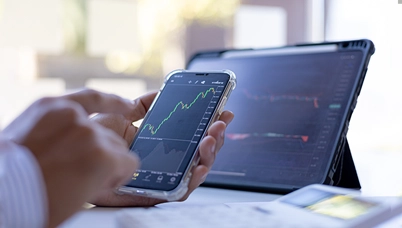What Are Debt Mutual Funds
Posted On Thursday, Jan 23, 2020
Debt Mutual Funds invest in fixed income securities such as bonds, corporate debentures, Government securities, and money market instruments.
The objective of Debt Mutual Funds is steady and regular income to investors but varies in accordance to a sub-category.
Therefore from a risk-return standpoint, they are less risky compared to equity-oriented mutual funds. But, remember debt-oriented are not completely risk-free or safe.
Under debt mutual funds, there are 16 sub-categories as defined by SEBI:
1) Overnight Fund – An overnight fund has a mandate to invest in overnight securities that have a maturity of as low as 1 day. They are typically money market instruments viz. Treasury bill (T-Bills). So, post-re-categorisation, you may find the liquid fund you invested in, is now classified under the overnight fund sub-category.
Suitability: On a risk-return spectrum, overnight funds are placed at the bottom; meaning they are a very low risk-very low return investment proposition. To park money for the very short-term, say from day to a week, one can consider an overnight fund as a substitute for holding money in a savings bank account.
2) Liquid Fund – A liquid fund invests in debt & money market instruments with a maturity of upto 91 days only. They invest in money market instruments such as Certificate of Deposits (CDs),Commercial Papers, Term Deposits, Call Money, Treasury Bills and so on.
Suitability: Liquid fund entails low risk. So, if your risk appetite is low, want to park money for short-term, are planning for short-term goals that are, say a few months away, planning for contingency needs, want to offset greater volatility of bond and/or equity markets; then consider liquid funds.
3) Ultra-short duration Fund – An ultra-short term fund invests in Debt & Money Market instruments such that the Macaulay duration of the portfolio is between 3 months to 6 months. So, compared to liquid funds they invest in higher maturity debt papers and money market instruments.
The Macaulay Duration (named after Frederick Macaulay) is the weighted average term-to-maturity of the cash flows from a bond. The weight of each cash flow is determined by dividing the present value of the cash flow by the price.
After the mutual fund re-categorisation, you may find that the Ultra-short Term Debt Fund you invested is now re-categorised as Money Market Fund or Low Duration Fund, depending on its duration it plans to hold.
Suitability:As the duration is slightly higher, the risk is slightly higher as well compared to a liquid fund. Hence, if you are planning for short-term goals, where say the money is required after 6 months, ultra-short term fund may be considered. The ideal time horizon to park money in an ultra-short term fund is 3 to 6 months.
4) Low duration Fund – A low duration fund, compared to an ultra-short term fund, invests in debt and money market instruments such that the Macaulay duration of the portfolio is between 6 months to 12 months. Hence, what changes here is the maturity profile of the debt portfolio.
Suitability: On the risk-return spectrum, a low duration fund is placed a little above than ultra-short term fund. This is because; the slightly higher duration increases the risk as well to the portfolio. They are okay for investors who are willing to take more risk and have an investment time horizon of upto a year.
5) Money market Fund – The fund, as the name suggests, predominantly invests in Money Market instruments having the maturity of upto 1 year. The instruments include Certificate of Deposits (CDs), Commercial Papers, Term Deposits, Call Money, Treasury Bills and so on. However, unlike an overnight fund and liquid fund, the maturity profile of the portfolio is higher.
Suitability: A money market fund is suitable if you wish to have dominant exposure to money market instruments and have an investment time horizon of upto a year. On the risk-return spectrum, owing to a longer maturity profile, they are placed above low duration fund. Therefore, the returns will be quite competitive to 1-year bank Fixed Deposit (FD).
6) Short duration Fund – A short duration fund invests in debt and money market instruments such that the Macaulay duration of the portfolio is between 1 year to 3 years, as characterised by the regulator. Hence, compared to a low duration fund, the maturity profile of the debt portfolio is longer while they could invest in a variety of debt papers, corporate bonds/debentures, government securities, and money market instruments.
Suitability: As the duration is relatively higher, the risk is two levels above a low duration fund. Hence, while you may consider a short duration fund for an investment time horizon of anywhere between 1 to 3 years, be ready for low-to-moderate interest risk as well (in a rising interest rate scenario). The returns could be comparable to a 3-year FD.
7) Medium duration Fund – A medium duration fund invests in debt and money market instruments such that the Macaulay duration of the portfolio is between 3 to 4 years. Clearly, the maturity profile is longer than a short duration fund while it invests in various debt papers, including corporate bonds/debentures, government securities, and money market instruments.
Suitability: Relatively higher duration compared to a short duration fund, makes medium duration fund a moderate risk-moderate return investment proposition. If you are a moderate risk taker and your investment time horizon is anywhere between 3 to 5 years, you may consider a medium duration fund.
8) Medium-to-long Duration Fund – A medium-to-long duration fund, as characterised by the regulator, invests in debt and money market instruments such that the Macaulay duration of the portfolio is between 4 to 7 years. So, compared to a short duration and medium duration fund, the maturity profile is higher while it invests in various debt papers, including corporate bonds/debentures, government securities, and money market instruments.
Suitability: Medium-to-long duration fund is a moderate-to-high risk contender. During a rising interest scenario, the risk gets accentuated and the return potential is limited. Thus, invest in a medium-to-long duration fund only if you have a moderate-to-high risk profile with a longer time horizon (of at least 5 years). If you are planning for long-term financial goals, such a fund would be inappropriate.
9) Long Duration Fund – A long duration fund invests in debt and money market instruments such that the Macaulay duration of the portfolio is greater than 7 years. They invest across debt papers viz. corporate bonds/debentures, government securities, and money market instruments.
Suitability: A longer duration fund exposes you, the investor, to higher risk. During a rising interest scenario, the risk gets heightened and the return potential is limited. Thus, invest in a long duration only if you have a high-risk profile with a longer time horizon (over 7 years). If you are planning for long-term financial goals, such a fund may be inappropriate.
10) Dynamic Bond Fund – A dynamic bond fund holds the mandate to invest across durations: short-term, medium-term, and long-term. It has the flexibility to adjust the duration of the portfolio to benefit from the possible change in the interest rate structure. Therefore, a dynamic bond fund could move into short-term instruments, such as commercial paper (CP) and certificates of deposit (CDs), or long-term instruments, such as corporate bonds and gilt securities, depending on their outlook on interest rates.
Suitability: Only if you have an investment time horizon of 3 to 5 years, and wish to be exposed to low risk compared to an equity mutual fund, you may consider investing in a dynamic bond fund. On the risk-return spectrum of debt funds, a dynamic bond is placed between medium duration debt and a long duration debt fund.
11) Corporate Bond Fund – As characterised by SEBI, a corporate bond fund invests a minimum 80% of its assets in corporate bonds (only in highest rated instruments i.e. AA+ and above). The kind of duration the fund will hold is not specifically defined.
Suitability: On the risk-return spectrum of debt funds, a corporate bond fund is relatively safe than a credit safe fund. If you wish to seek exposure to highest rate corporate bond, this category of debt mutual fund would be appropriate. However, you also ought to keep a close watch on the duration of a respective scheme.
12) Credit Risk Fund – As the name suggests, a credit risk fund invests minimum 65% of its total assets in corporate bonds (below the highest rated instruments). i.e. investments are predominantly in AA and below rated instruments, according to the regulatory guidelines. Again here, like the corporate debt fund, the duration is not defined.
Suitability: In comparison to a corporate bond fund, a credit risk fund has higher risk exposure. So, only if you are willing to take higher credit risk for higher yield, may consider investing a credit risk fund. Also, keep a close watch on the portfolio duration a respective scheme.
13) Banking and PSU Fund – As defined by the regulator, a banking and PSU (Public Sector Undertaking) debt are required to invest minimum 80% of its total net assets in debt instruments of banks, PSUs, and Public Financial Institutions. Therefore, a dominant exposure of the portfolio is skewed to debt instruments from this sector. The duration of debt papers a fund is not defined.
Suitability: If you wish to seek exposure to debt instruments of banks, PSUs, and Public Financial Institutions, you may consider such a debt fund. But do look at the portfolio of a respective scheme. Owing to the sector concentration a Banking and PSU debt fund is placed higher on the risk-return spectrum compared to a corporate bond fund, credit risk fund, and a medium duration fund.
14) Gilt Fund – A gilt fund invests minimum 80% of its assets Government securities (G-secs)—across maturities as per the regulatory guidelines. The government securities could be issued by state and/or central government.
Suitability: If you wish to seek exposure to debt instruments issued by the government and have a time horizon of 5 years, consider a gilt fund. But do pay attention to the underlying assets i.e. quality of the debt papers held by the fund too. On the risk-return spectrum for debt mutual funds, a gilt fund is a high risk-higher return investment proposition. The returns you could yield are hinged on the interest rate scenario – whether rates are falling, or rising. When interest rates are expected to fall, that’s the best time to invest in gilt funds.
15) Gilt Fund with 10-year Constant Duration Fund – As per the regulatory guidelines, this gilt fund invests minimum 80% of the total net assets in G-secs, such that the Macaulay duration of the portfolio is equal to 10 years. So, unlike the gilt fund discussed above, the portfolio duration for this fund is well-defined.
Suitability: On the risk-return spectrum, compared to normal gilt fund, this one is placed a notch below. The returns you could yield are hinged on the interest rate scenario – whether rates are falling, or rising. When interest rates are expected to fall, that’s the best time to invest in gilt funds. But make sure you have a time horizon of at least 5 years when you invest and pay attention to the quality of the underlying assets.
16) Floater Fund – As characterised by the regulator, this fund invests a minimum 65% of total assets in floating rate instruments. A unique trait of a floater fund is that it invests in debt instruments whose interest rate varies as per the underlying interest rate scenario. Thus, a floater fund is less sensitive to interest rate risk as well as duration risk. But do look the credit quality of the portfolio it holds.
Suitability: If your time horizon is between 2-3 years, and wish to mitigate the risk of fluctuating interest rates, you may consider a floating rate fund. Compared to a liquid fund and money market mutual fund, a floater fund would expose you high risk depending on the quality of debt papers it holds.
Disclaimer, Statutory Details & Risk Factors:The views expressed here in this article / video are for general information and reading purpose only and do not constitute any guidelines and recommendations on any course of action to be followed by the reader. Quantum AMC / Quantum Mutual Fund is not guaranteeing / offering / communicating any indicative yield on investments made in the scheme(s). The views are not meant to serve as a professional guide / investment advice / intended to be an offer or solicitation for the purchase or sale of any financial product or instrument or mutual fund units for the reader. The article has been prepared on the basis of publicly available information, internally developed data and other sources believed to be reliable. Whilst no action has been solicited based upon the information provided herein, due care has been taken to ensure that the facts are accurate and views given are fair and reasonable as on date. Readers of this article should rely on information/data arising out of their own investigations and advised to seek independent professional advice and arrive at an informed decision before making any investments. Please visit – www.quantumamc.com/disclaimer to read scheme specific risk factors. |
Related Posts
-

Debt Monthly for December 2025
Posted On Tuesday, Dec 02, 2025
As we approach the end of the calendar year, we find ourselves at a pivotal moment, with the market split on the likelihood of an upcoming rate cut.
Read More -

Debt Monthly for November 2025
Posted On Tuesday, Nov 04, 2025
October 2025 in a Nutshell: Monetary Policy and Demand–Supply
Read More -

Debt Monthly for October 2025
Posted On Friday, Oct 03, 2025
September was a pivotal month for fixed income markets, both globally and domestically.
Read More



